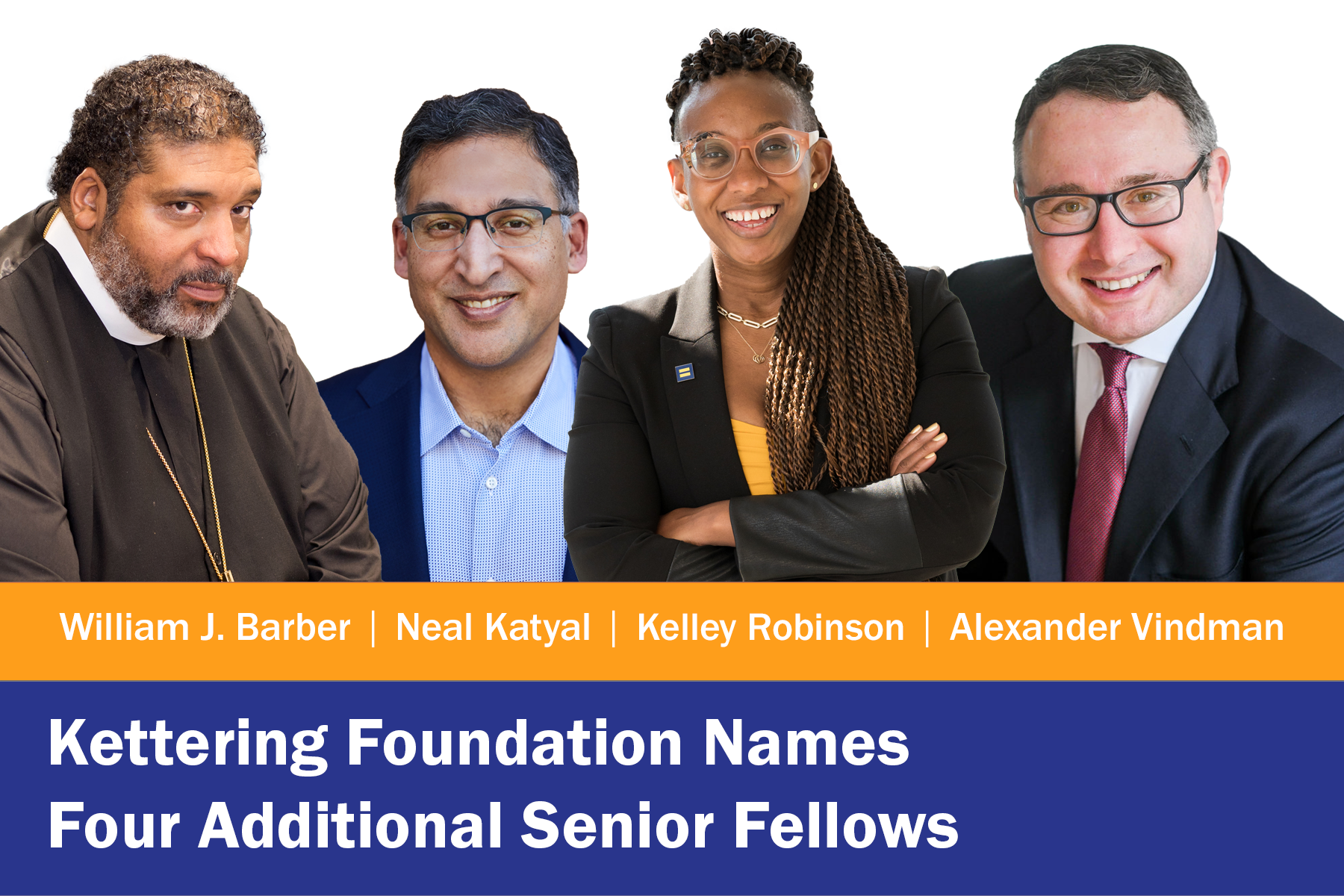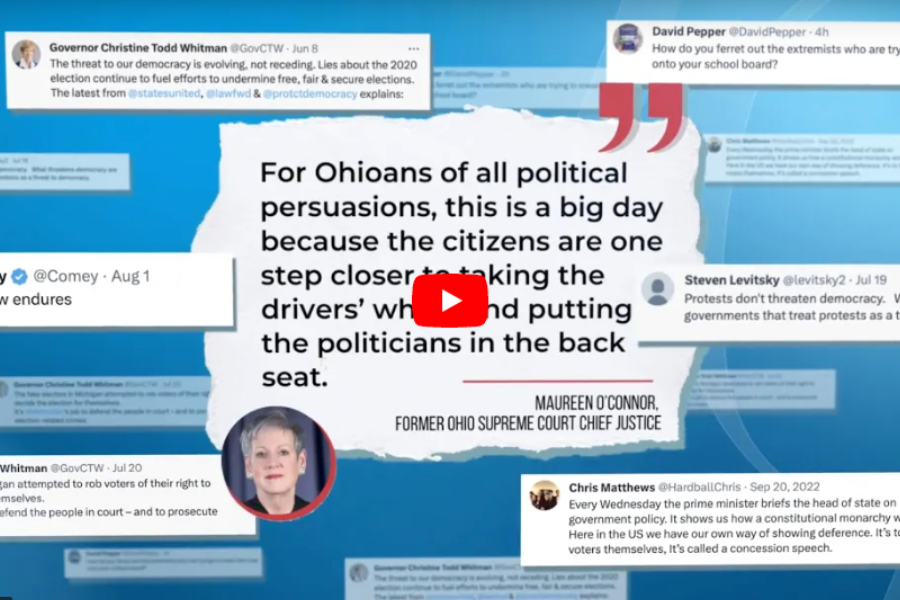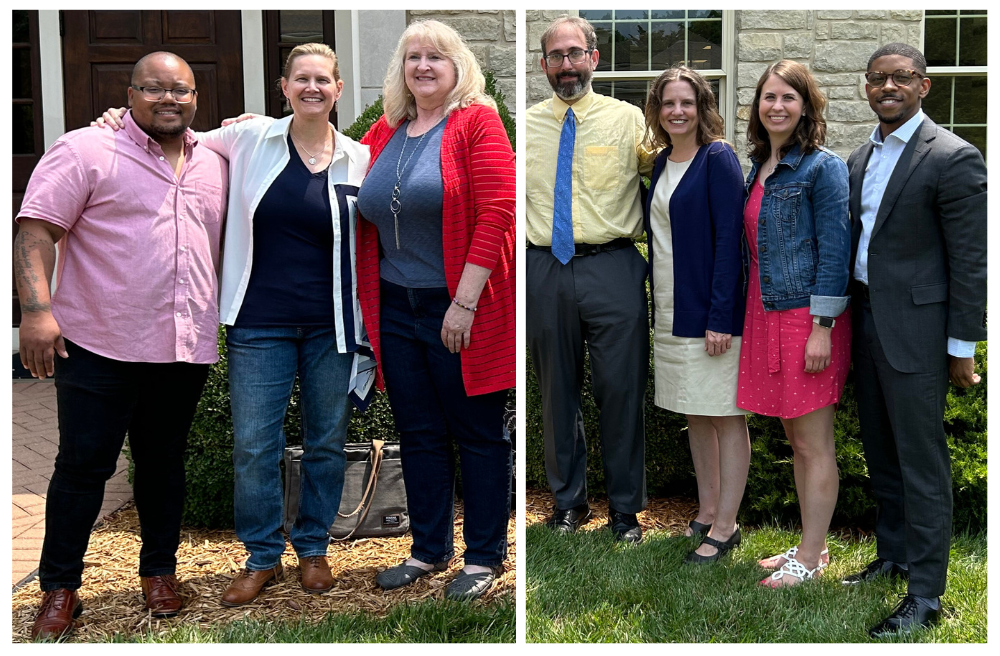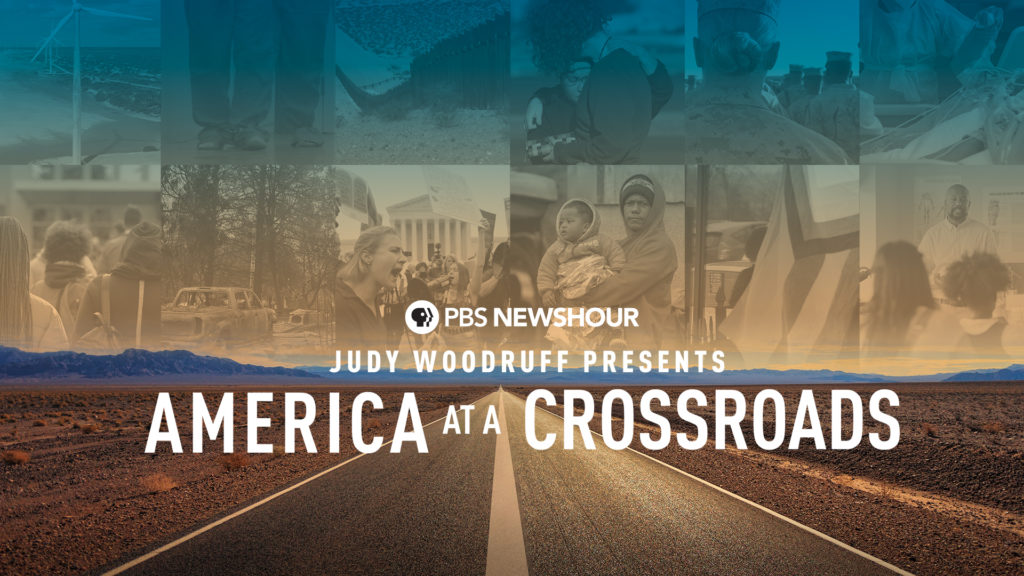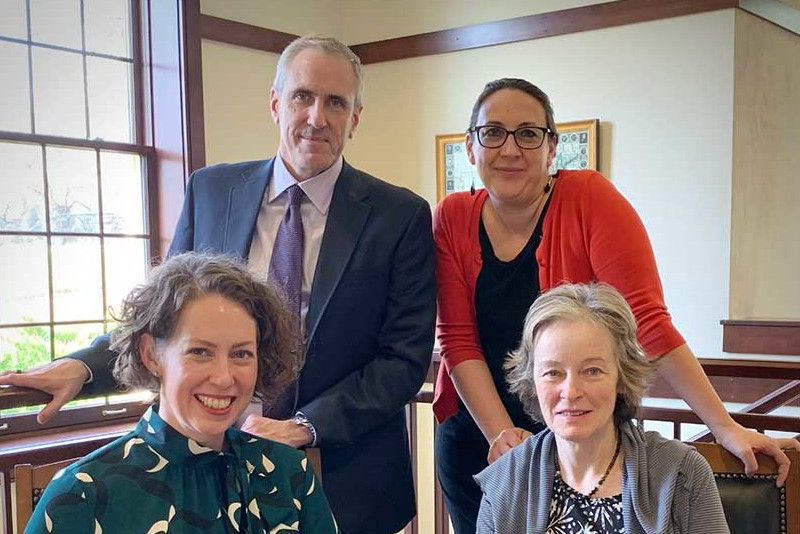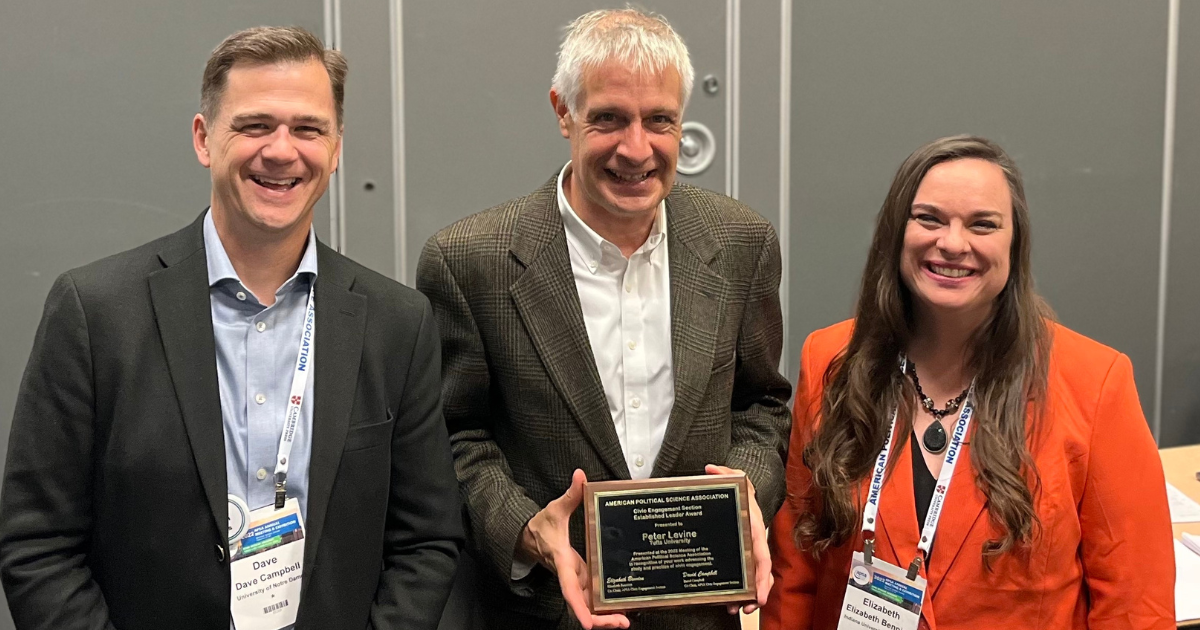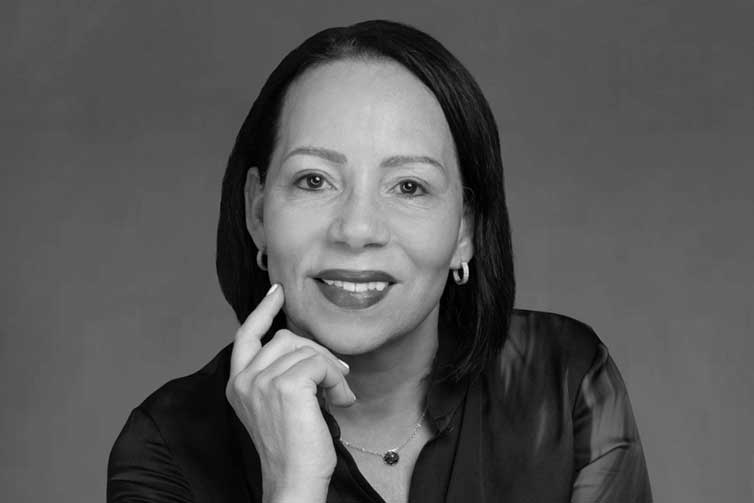Over 100 Former College Presidents Respond to Supreme Court Decision

Today, the Supreme Court overturned decades of precedent that allowed colleges and universities to consider race as one of many factors in college admissions. This is a blow to our democracy.
The Charles F. Kettering Foundation has been preparing for such a decision for months. Earlier this year, the foundation and the American Association of Colleges and Universities (AAC&U) brought together former college and university presidents in Washington, DC, to form a leadership group to support higher education and its role in American democracy. Also present at the February meeting were representatives of Public Agenda, PEN America, Campus Compact, and Sustained Dialogue Institute.
The group committed to work together to confront urgent challenges to democracy and higher education, such as efforts to undermine public support for higher education and recent and pending state legislation to discourage attention to racial inequality in the curriculum. The statement below is the first product of their work.
In anticipation of the Supreme Court’s decision on Students for Fair Admissions v. Harvard, the group prepared a written statement in the event that the decision found race-conscious admissions practices unconstitutional. The Court’s decision in that case has now been released and can be found here.
If you are a former university president and would like to endorse the statement, please respond to media@kettering.org and include your name exactly as you would like it to appear and all institutions you have represented as president. Media inquiries should be directed to the same address.
Former College Presidents Speak Out for Diversity in Higher Education in Wake of Supreme Court Decision
The following is a joint statement from over 100 former college presidents who led institutions in 31 States.
We the undersigned are deeply concerned about the impact the US Supreme Court’s decision in Students for Fair Admissions v. Harvard will have on our democracy. We are speaking out now in support of our colleagues who are still working in higher education. Today in a split decision, the Court has forbidden colleges and universities from weighing race and ethnicity as one of a wide variety of factors in admissions.
The Court’s insistence that race be ignored strengthens the hand of the wealthy and the privileged in college admissions and undermines efforts to create richly diverse campuses that benefit all students. This will make college campuses significantly less diverse and higher education more segregated. It sends the message that addressing racial inequities is somehow improper. Nothing could be further from the truth; in fact, the decision exposes the actions of the Supreme Court as out of step with the nation it is designed to serve.
This short-sighted decision will have a corrosive impact on higher education and our democracy. America is a great experiment in the idea that a diverse people can live and thrive together across differences of race, ethnicity, religion, and class. Generation Z is more racially and ethnically diverse than any generation before them. Even as they are projected to become majority non-White by 2026, disparities in wealth and income for Black and Latino households continue to grow. A college degree is a gateway to the middle class. Closing the doors of higher education to more students of color will make that inequality worse, not better.
The Court’s decision will have ripple effects far beyond college campuses, stymying the efforts of businesses across the country to diversify their workforces and to serve a changing consumer landscape. The Court’s move clears the way for opponents of diversity to turn back the clock.
It is no accident that the Court’s decision comes at a time when bills attacking diversity in higher education have metastasized in state legislatures across the nation, all attempting to reverse our progress toward a more inclusive democracy.
The future of our democracy depends upon a shared appreciation of our differences. Despite the Court’s decision, we must redouble our efforts and explore alternative means of creating richly diverse college campuses that reflect the nation’s youth. Failure to do so will lead to further backsliding into a less equitable and just society and will entrench the system of inequality that has long plagued our country, perpetuating a cycle of disadvantage in which students from underrepresented groups are unable to access the same opportunities as their peers.
Signatories
Stephen C. Ainlay, Union College
Teresa L. Amott, Knox College
Stan R. Arterberry, West Valley-Mission Community College District; Solano Community College District; West Hills Community College District
Steven C. Bahls, Augustana College
Esther L. Barazzone, Chatham University
Gretchen M. Bataille, University of North Texas
Priscilla J. Bell, Fulton-Montgomery Community College; Highline College; North Idaho College
Kim Benston, Haverford College
Robert Birnbaum, University of Wisconsin-Oshkosh
George R. Boggs, Palomar College
Derek Bok, Harvard University
José Antonio Bowen, Goucher College
Wilson G. Bradshaw, Florida Gulf Coast University; Metropolitan State University
Daan Braveman, Nazareth University
Dean L. Bresciani, North Dakota State University
George Campbell, Jr., The Cooper Union
Mary Schmidt Campbell, Spelman College
Teri Cannon, Minerva University
Robert L. Carothers, University of Rhode Island; Southwest Minnesota State University; Minnesota State University System
Roger Casey, McDaniel College
John C. Cavanaugh, University of West Florida; Pennsylvania State System of Higher Education
F. Javier Cevallos, Kutztown University of Pennsylvania; Framingham State University
Ellen-Earle Chaffee, Valley City State University; Mayville State University
Donald P. Christian, State University of New York at New Paltz
Johnnetta Cole, Spelman College; Bennett College
Richard J. Cook, Allegheny College
Christopher C. Dahl, State University of New York at Geneseo
Rassoul Dastmozd, Saint Paul College
Lorna Duphiney Edmundson, Wilson College; Trinity College
Jeffery Scott Elwell, Eastern New Mexico University
Scott Evenbeck, Stella and Charles Guttman Community College
Mary L. Fifield, Bunker Hill Community College; Harrisburg Area Community College
William V. Flores, University of Houston-Downtown; Antioch University, Santa Barbara
William L. Fox, St. Lawrence University
A. Lee Fritschler, Dickinson College
Claire Gaudiani, Connecticut College
Rufus Glasper, Maricopa Community Colleges
Barry Glassner, Lewis and Clark College
Gena D. Glickman, Manchester Community College; Massasoit Community College
Karen Gross, Southern Vermont College
Richard Guarasci, Wagner College
Alan E. Guskin, University of Wisconsin-Parkside; Antioch University
Phoebe A. Haddon, Rutgers University-Camden
Thomas L. Hallman, University of South Carolina Aiken
Cynthia Jackson Hammond, Central State University
Dennis M. Hanno, Wheaton College
Elaine Tuttle Hansen, Bates College
Dianne F. Harrison, California State University, Northridge; California State University, Monterey Bay
Walter Harrison, University of Hartford
David F. Hartleb, Northern Essex Community College
Chet Haskell, Monterey Institute of International Studies; Cogswell Polytechnical College
Susan Henking, Shimer College; Salem Academy and College
Richard H. Hersh, Hobart and William Smith Colleges; Trinity College
Beverly Wade Hogan, Tougaloo College
Freeman Hrabowski, University of Maryland, Baltimore County
James Jacobs, Macomb Community College
Kristina M Johnson, The Ohio State University
Grace Sawyer Jones, Three Rivers Community College; College of Eastern Utah
Thomas R. Kepple Jr., Juniata College
Harvey Kesselman, Stockton University
William E. Kirwan, The University System of Maryland
A. Richard Kneedler, Franklin & Marshall College
Kathy A. Krendl, Otterbein University
Mark La Branche, Louisburg College; Martin Methodist College; University of Tennessee Southern
Steven D. Lavine, California Institute of the Arts
Carol Leary, Bay Path University
Arthur Levine, Teachers College, Columbia University
David L. Levinson, Norwalk Community College
Willard Lewallen, Hartnell College
Elaine Maimon, Governors State University; University of Alaska Anchorage
David Maxwell, Whitman College; Drake University
Mary Patterson McPherson, Bryn Mawr College
Gail O. Mellow, LaGuardia Community College; The City University of New York; Gloucester County College
Michael A. Middleton, University of Missouri System; Lincoln University (interim)
James Moeser, The University of North Carolina at Chapel Hill; University of Nebraska-Lincoln
Charles R. Mojock, Lake-Sumter State College
Richard L. Morrill, Salem College; Centre College; University of Richmond
Brian Murphy, De Anza College
Kathleen M. Murray, Whitman College
William V. Muse, University of Akron; Auburn University; East Carolina University
Felice Nudelman, Antioch University
Eduardo M. Ochoa, California State University, Monterey Bay
Shari L. Olson, South Mountain Community College
Eduardo J. Padrón, Miami Dade College
Mary A. Papazian, Southern Connecticut State University; San Jose State University
Patti McGill Peterson, Wells College; St. Lawrence University
Judith Ramaley, Portland State University; University of Vermont; Winona State University
Edward J. Ray, Oregon State University
Kevin P. Reilly, University of Wisconsin System; University of Wisconsin Extension
Brian Rosenberg, Macalester College
Lisa A. Rossbacher, Southern Polytechnic State University; Humboldt State University
Herman J. Saatkamp, Jr., Stockton University
Alvin J. Schexnider, Winston-Salem State University
Mark Schulman, Antioch University, Southern California; Goddard College; Saybrook University; Presidio Graduate School
John F. Schwaller, State University of New York-Potsdam
Robert A. Scott, Adelphi University; Ramapo College of New Jersey
Judith Shapiro, Barnard College
Peter Smith, Community College of Vermont; California State University, Monterey Bay
Rosanne Somerson, Rhode Island School of Design
Julianne Still Thrift, Salem College
Barbara Vacarr, Goddard College
Robert Weisbuch, Drew University
A. Dale Whittaker, University of Central Florida
Wim Wiewel, Portland State University; Lewis and Clark College
Gregory H. Williams, The City College of New York, City University of New York; University of Cincinnati
R. Owen Williams, Transylvania University
Jamie C. Williamson, Winthrop University
John Silvanus Wilson, Jr., Morehouse College
Eileen B. Wilson-Oyelaran, Kalamazoo College
Terri L. Winfree, Prairie State College
Les Wong, San Francisco State University
Resources
Related Statements from Other Organizations
AAU President Statement on Value of Diverse Campus Communities
AAC&U Statement on Supreme Court’s Decision
Campus Compact Addressing Supreme Court’s Ruling
Philanthropic Joint Statement in Response to Supreme Court Decision
Demographic Change and Multiracial Democracy
Pew Research Center, What We Know About Generation Z So Far, May 14, 2020.
Urban League, State of Black America 2023, Democracy in Peril: Confronting the Threat from Within.
Dowell Myers, Census 2020, Racial Demographic Trends, and Narratives of Interpretation, Kettering Foundation, 2023.
Racial Disparities in Education and Wealth
Pell Institute for the Study of Opportunity in Higher Education and the University of Pennsylvania Alliance for Higher Education and Democracy (PennAHEAD), Indicators of Higher Education Equity in the United States: 2022 Historical Trends Report.
Othering and Belonging Institute Racial Disparities Dashboard
Pew Research Center, Six Facts About Economic Inequality, February 7, 2020.
Race-Conscious Admissions
American Association of Colleges & Universities amicus brief
Georgetown University Center on Education and the Workforce, Race, Elite College Admissions, and the Courts
Harvard respondent brief
Amicus brief by group of major American businesses
University of California amicus brief
University of Michigan amicus brief
UCLA Civil Right Project policy brief
Alternatives to Race-Conscious Admissions
Sheryll Cashin, “Place Not Race: Reforming Affirmative Action to Redress Neighborhood Inequality,” Furman Center, July, 2014.
Halley Potter, “What Can We Learn from States That Ban Affirmative Action?” The Century Foundation, June 26, 2014.
Richard Guarasci, Neighborhood Democracy: Building Anchor Partnerships between Colleges and Their Universities (Stylus, 2022).
Anti-Diversity, Equity, and Inclusion Legislation
Chronicle of Higher Education Tracker
NASPA Anti-DEI Legislation Resources
NADOHE in the News: Fighting For DEI Efforts
Legislation to Restrict Academic Discussion of Racial Inequality
Jeremy Young and Jonathan Friedman, America’s Censored Classrooms, PEN America, August 17, 2022.
UCLA School of Law, CRT Forward Tracker
Champions of Higher Education statement
Kevin P. Reilly op-ed
Campus Misinformation website
Campus Climate and Freedom of Speech
Knight Foundation, College Student Views on Free Expression and Campus Climate 2022
Foundation for Individual Rights and Expression Free Speech Rankings
